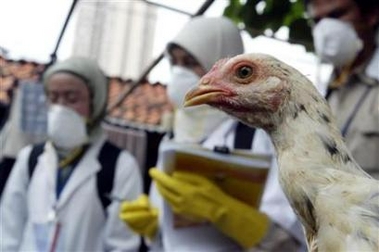Asia-Pacific
WHO says H5N1 mutated in Indonesia
(Reuters)
Updated: 2006-06-23 21:51
 |
Large Medium Small |
The H5N1 birdflu virus mutated somewhat among Indonesians in the largest known human cluster, but did not evolve into a more transmissible form, the World Health Organization (WHO) said on Friday.
 Indonesian health officials in south Jakarta, February 24, 2006. The H5N1 virus mutated somewhat among Indonesians in the largest known human cluster, but did not evolve into a more transmissible form, the WHO said on Friday. [Reuters] |
A spokeswoman for the U.N. agency, Maria Cheng, said the result had come from its investigation into a recent cluster of cases in northern Sumatra, where seven members of a single family were killed in May.
"There was a mutation found, it was in a report recently given to the (Indonesian) government. It was the summary of the investigation into the northern Sumatra case," she told Reuters in Geneva, in response to a query.
"But it did not mutate into a form that is more transmissible because it didn't seem to go beyond the cluster," she added.
Indonesian and WHO officials closely monitored more than 50 contacts of the victims, keeping them in voluntary home quarantine for several weeks following the outbreak, but none developed symptoms, according to the Geneva-based agency.
The H5N1 strain of avian influenza has spread rapidly out of eastern Asia in recent months. It almost exclusively infects birds but has killed 130 people since 2003, mostly in Asia.
Experts believe it poses the greatest threat yet of a pandemic, a global epidemic of flu that could kill millions, if it acquires the ability to pass easily from human to human.